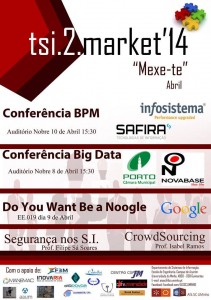Due to the intrinsic role that BPM plays as a methodology for many companies, BPM is the key success factor to achieve continued improvement of mission critical processes that cover the entire organization. It naturally is also highly susceptible to be combined with a whole set of other disciplines and methods, as the following examples shows.
Becker, Kugeler and Rosemann (2001) created a lifecycle model for BPM that covers specific project phases, spanning the process automation project creation and the resulting charter itself, process analysis, its optimization, implementation and measurement, in turn enabling continued process improvements, which can be seen in the figure below. These phases have been tightly linked to the 6 Sigma model for process improvements, known as “DMAIC” (Define, Measure, Analyze, Improve, Control), summarized and published by Paul Harmon in 2007.

Figure 1 – BPM lifecycle (based on Becker, Kugeler, & Rosemann, 2001)
A unifying approach for 6 Sigma’s DMAIC and BPM’s lifecycle, taking into account objectives, methods and risks could represented as shown in the following matrix:
| 6 Sigma | Step in the BPM lifecycle | Objectives | Methods | Risks |
| Define. | Process definition. | Identify the process priority, BPM initiative owners, goals and metrics. | BPM initiative owner objective matrix. SWOT analysis. Interviews, meetings and workshops with all involved process users. | Mistakes during process scoping. Lack of knowledge regarding the current process ecosystem. Lack of technical and operational understanding from the end users’ side. |
| Measure. | Modelling of the current process (as-is). | Document the current process. Distribution of process knowledge and achievement of a shared understanding regarding the current situation. Identify weaknesses. | Process model simulations.Modeling notations. Interviews and workshops. | Gap between the modelled current process and the real current process. Loss of information due to ineffective communication and/or excessive knowledge-handoffs. Incomplete process design. |
| Analyze. | Analysis of the current process (as-is). | Discovery of the process objectives, its restrictions and limitations. Risks. Costs. Added values. | SWOT analysis.6 Sigma analysis. Scenario and requirements analysis of the BPM initiative owners. Cost based analysis. Analysis of causal factors. Interviews and workshops. | Unrealistic and/or misaligned expectations of the BPM initiative owners, exceeding the project limitations. Deficiencies in the applied analysis model and process knowledge is limited to only a few individuals. |
| Improve. | Improvements to the process as a result of implementing BPMS platforms and BPM process solutions. | Definition of the enhanced process to-be within the boundaries of the projects’ triple restriction (time, budget, quality/scope). Decreasing risk factors and surfacing process innovations. | Interviews, workshops. Derived from the analysis of the existent processes and their activity patterns. Comparison and reviews against reference models of automated processes. | Limitations to what extent processes process are going to be changed, imposed by the project team members. Different expectations of the outcome to be produced by the process “to-be”. Insufficient analysis of the proposed processes. Lack of creativity (on an individual or group level). |
| Control. | Process implementation. | Implementation of a requirement change control methodology. | Force field analysis. | Insufficient attention to incidents and errors. Disconnection between BPM project objectives and change requests. Insufficient internal/external communication. |
| Process execution. | Capturing and indexing process improvement opportunities. | Automation. | Excluding technology adaptations. | |
| BPM control and measurement. | Continued BPM process review and supervision. Mapping of process capacities and weaknesses. | Process flow audits and in-depth log file review. Review of results against prior established SLAs. | Delays in the final BPM certification and project sign-off. High rotation among the project team members. |
Table 1 – Process lifecycle definitions and DMAIC mapping (based on Becker et al., 2001)
Questions to you:
- Which BPM methodologies do you follow in particular (for example applying the CBOK of the ABPMP)?
- With what others methodologies have you seen BPM being successfully (or unsuccessfully) combined?
References
- Becker, Kugeler, & Rosemann, M. (2001). Business Process Lifecycle Management, White paper.
- Paul Harmon, Business Process Change, Second Edition: A Guide for Business Managers and BPM and Six Sigma Professionals, 2007.






